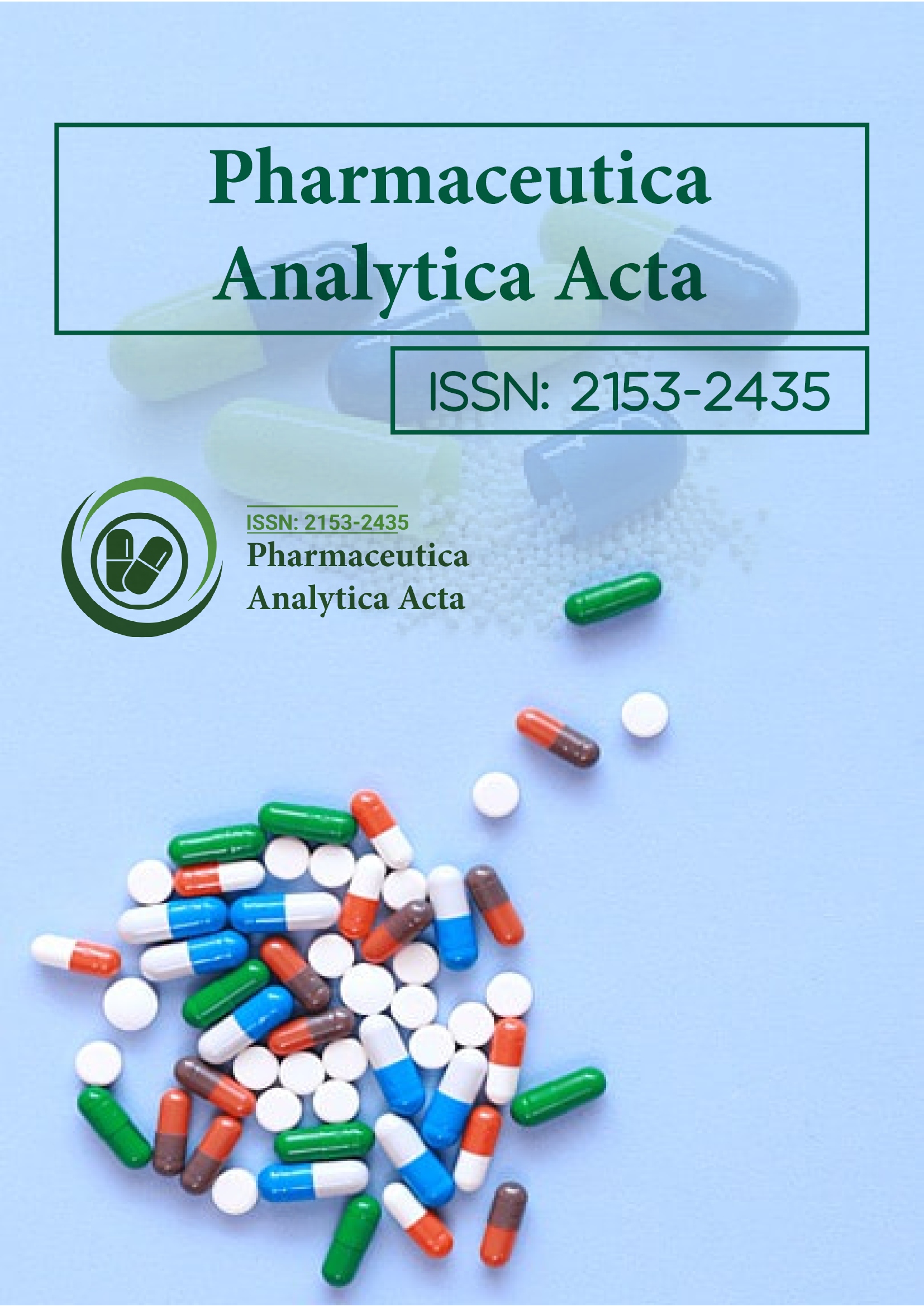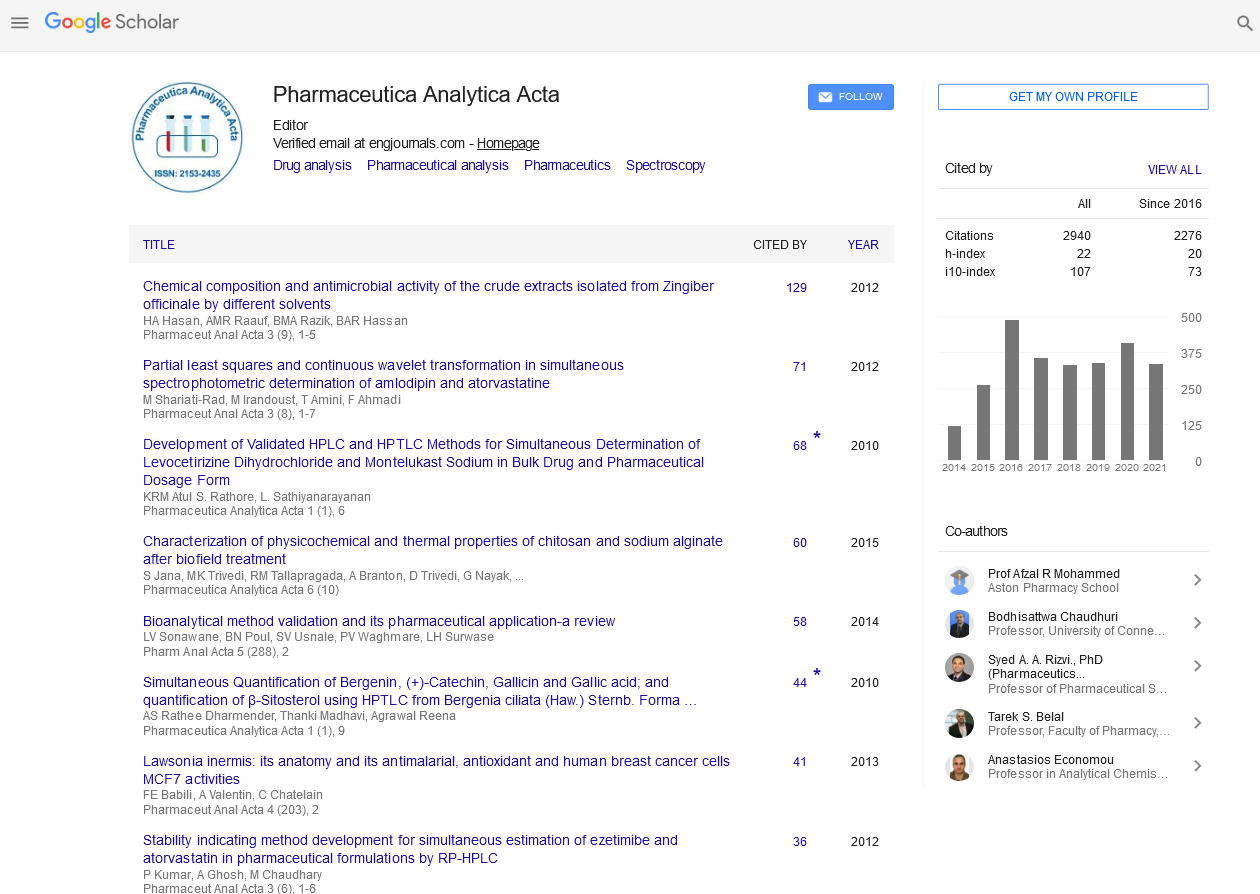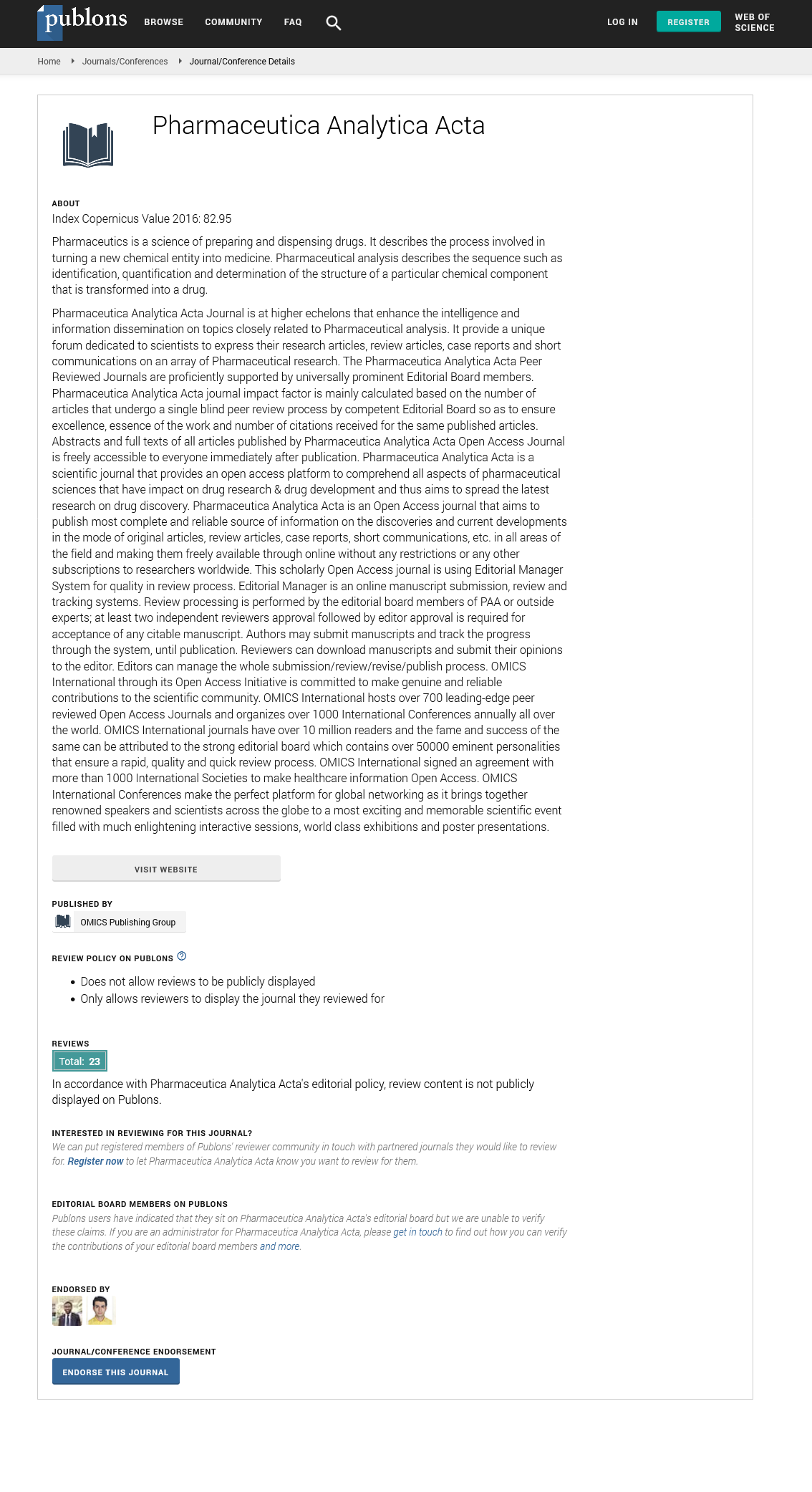Indexed In
- Open J Gate
- Genamics JournalSeek
- Academic Keys
- JournalTOCs
- The Global Impact Factor (GIF)
- China National Knowledge Infrastructure (CNKI)
- Ulrich's Periodicals Directory
- RefSeek
- Hamdard University
- EBSCO A-Z
- OCLC- WorldCat
- Publons
- Geneva Foundation for Medical Education and Research
- Euro Pub
- Google Scholar
Useful Links
Share This Page
Journal Flyer

Open Access Journals
- Agri and Aquaculture
- Biochemistry
- Bioinformatics & Systems Biology
- Business & Management
- Chemistry
- Clinical Sciences
- Engineering
- Food & Nutrition
- General Science
- Genetics & Molecular Biology
- Immunology & Microbiology
- Medical Sciences
- Neuroscience & Psychology
- Nursing & Health Care
- Pharmaceutical Sciences
Perspective - (2025) Volume 16, Issue 3
Analytical Approaches to Controlled-Release Formulations
Victor Morales*Received: 30-Aug-2025, Manuscript No. PAA-25-30232; Editor assigned: 01-Sep-2025, Pre QC No. PAA-25-30232; Reviewed: 16-Sep-2025, QC No. PAA-25-30232; Revised: 22-Sep-2025, Manuscript No. PAA-25-30232; Published: 30-Sep-2025, DOI: 10.35248/2153-2435.25.16.830
Description
Controlled-release dosage forms present distinct challenges in modern drug formulation as the release of active ingredients must be precisely managed over prolonged durations to maintain therapeutic effectiveness. The ability to regulate how and when a compound is released ensures that consistent blood concentrations are maintained, minimizing side effects and improving patient compliance. To achieve this detailed testing method are required to characterize how such formulations behave under physiological conditions and to confirm that their performance aligns with design expectations. These evaluations involve measuring release rates identifying mechanisms that control the liberation of active substances and determining how formulation variables influence overall behavior. By integrating accurate experimentation with careful data interpretation scientists can refine dosage form design, improve efficiency and ensure the final product performs reliably in clinical use. Various techniques are used to evaluate controlled-release systems, each providing valuable insights into different aspects of drug behavior. Dissolution testing is one of the most widely applied approaches and forms the foundation of release evaluation. It mimics the conditions of the human digestive system, using solutions that replicate variations in agitation and enzyme content to determine how rapidly and completely the compound is released. This process provides a direct understanding of how the dosage form interacts with biological fluids. Instruments such as chromatographic systems are used to measure drug concentrations at defined time points, producing quantitative data that describe the release pattern with high precision. Spectrophotometric measurements further assist by offering quick assessments of concentration changes without the need for complex sample preparation. Together, these tools allow the construction of comprehensive release profiles showing how formulation design affects the rate and duration of drug availability.
Interpreting the data obtained from these studies requires both experimental precision and mathematical analysis. Release behavior is often explained through models based on diffusion, erosion or combinations of both depending on the nature of the matrix. Diffusion-based systems typically involve movement of the drug through a polymer barrier, while erosion-controlled systems depend on gradual breakdown of the carrier material. By applying mathematical models, scientists can link experimental data to theoretical release mechanisms identifying how variables such as polymer composition, particle size, density and coating thickness influence release dynamics. Adjusting these variables systematically during testing helps determine which factors are most critical for achieving consistent performance. This predictive understanding streamlines formulation development, enabling optimized designs before full-scale production begins. Maintaining precise control over testing conditions is essential in controlled-release studies. Even small variations in pH, temperature, stirring speed or sampling time can alter results and compromise accuracy. Therefore, strict standardization of all experimental parameters and comprehensive documentation of methods are fundamental to achieving reproducibility. Results are typically supported by statistical evaluation, including variance analysis and regression modeling, to confirm reliability and consistency. Such rigorous attention to detail ensures that findings are dependable and can be confidently applied to guide formulation decisions. Transparent presentation of both raw and processed data allows other investigators to verify results strengthening confidence in the conclusions and supporting collaborative advancement in dosage form development.
Beyond performance testing, evaluating controlled-release systems contributes directly to formulation improvement and patient safety. Understanding how various formulation components and processing conditions affect release rates helps prevent issues such as rapid dumping of the drug, incomplete release or premature degradation. Through these insights formulators can select suitable polymers, coating materials and stabilizers to achieve steady predictable release profiles. These findings also support regulatory compliance by providing clear evidence-based proof that the dosage form meets required standards for safety, effectiveness and quality. Environmental and physiological variables also play a significant role in influencing release behavior. Testing under simulated conditions such as changing gastrointestinal transit times, different fluid volumes and the presence of food helps predict how a dosage form will perform in real-world use. Such evaluations ensure that formulations remain reliable under the diverse conditions experienced by patients. Extended monitoring of release over long periods reveals even minor fluctuations that could affect therapeutic performance. These long-term observations enable refinement of design parameters, improving consistency, bioavailability and patient adherence.
Advancements in testing technology have further improved the ability to assess controlled-release formulations. Automated dissolution systems, sensitive detection instruments and computer modeling tools now allow faster, more precise evaluations. The integration of experimental data with predictive algorithms supports intelligent formulation design, reducing the need for repeated trial-and-error testing. This data-driven approach also facilitates rapid adaptation of dosage forms to meet specific therapeutic requirements or patient populations. In conclusion, studying controlled-release systems is a cornerstone of dosage form innovation. Through meticulous testing, quantitative evaluation and mathematical interpretation, scientists gain comprehensive understanding of how formulation variables influence performance. Standardized methods careful control of experimental conditions and transparent reporting ensure data reliability and support regulatory approval.
Citation: Morales V (2025). Analytical Approaches to Controlled-Release Formulations. Pharm Anal Acta. 16:830
Copyright: © 2025 Morales V. This is an open-access article distributed under the terms of the Creative Commons Attribution License, which permits unrestricted use, distribution and reproduction in any medium, provided the original author and source are credited.


